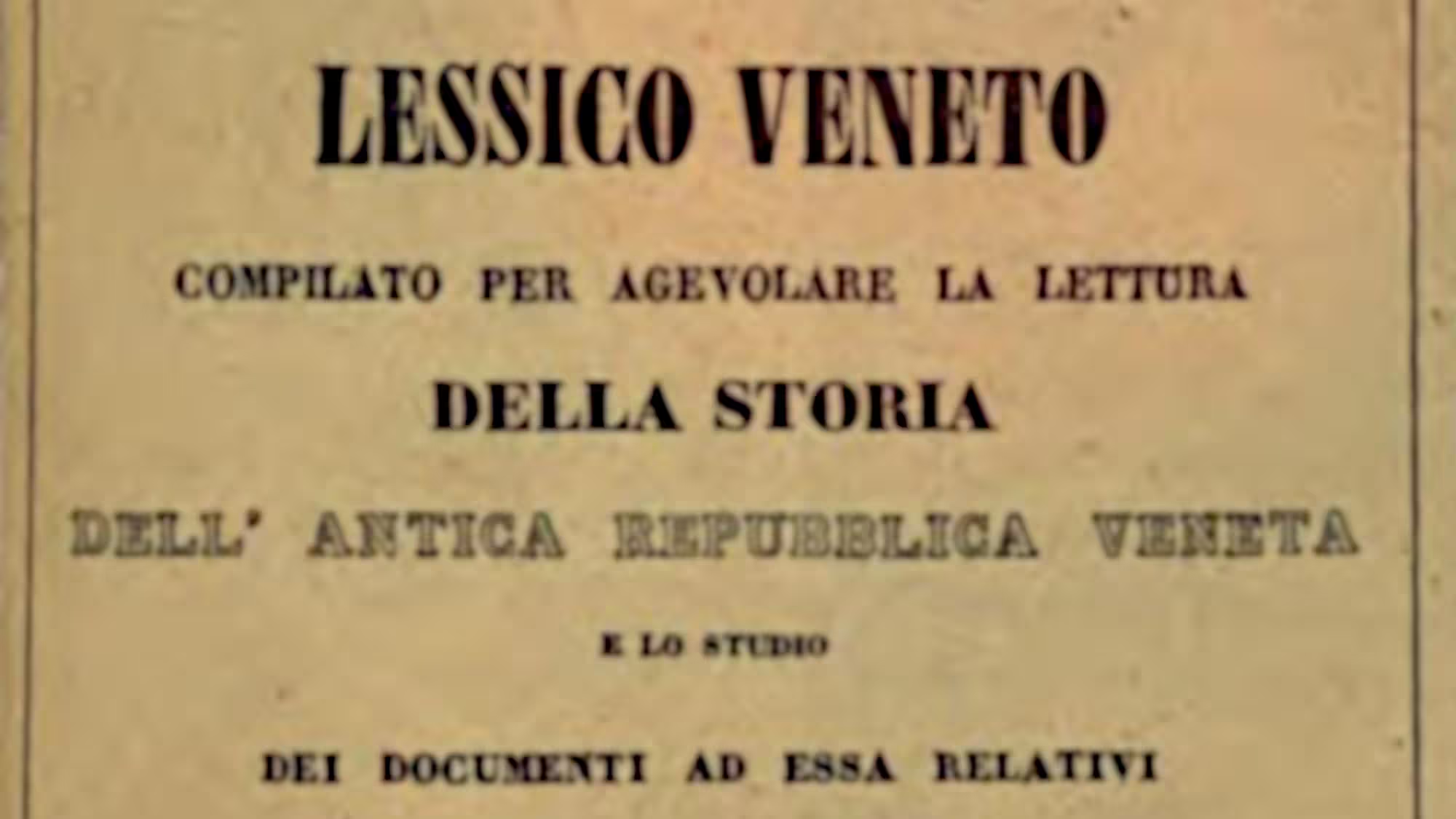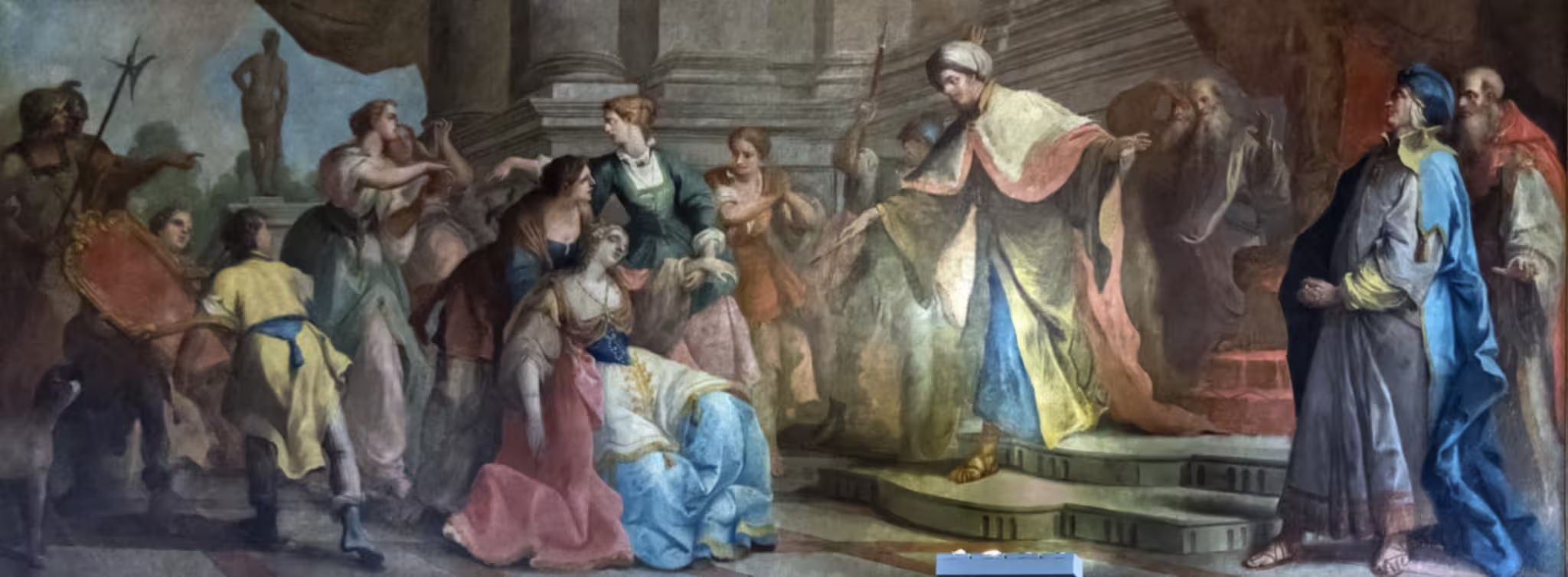Consiglio dei Dieci
The Lessico Veneto (Venetian Vocabulary) by Fabio Mutinelli was published in 1851. It is an invaluable tool for anybody who reads texts from the time of the Republic of Venice.
Fabio Mutinelli (1797-1876) was director of the I. R. Archivio Generale di Venezia (1847-1861), and a prolific writer on the history of Venice.
COUNCIL OF TEN. It was established on 25 June 1310 in the circumstance of the conspiracy of Boemondo Tiepolo,1 and was called Excellent. Made up of the Doge, the Councillors and ten patricians elected by the Maggior Consiglio, all belonging however to different families, its authority was supreme, which was exercised over every kind of person including that of the Doge himself. The office of the Council of Ten was to maintain the stability of the laws, equality and union among the citizens, especially curbing ambition, to supervise all the deliberations of the government, to regulate public holidays, and to finally judge of all crimes against the state (see Canal dell’Arco and Veleno): it had a separate budget, and an armoury room in the ducal palace. The ten members who actually made up the Council remained in office for a year, and wore purple robes: from them the three Cai,2 or Heads, were drawn by lot in each month, responsible for opening the letters addressed to the Council itself, and for convening it so ordinarily, as well as in extraordinary cases. The State Inquisitors were drawn from this Council. The Decemvirs,3 refusing in the year 1355 to judge Doge Marino Falier alone, guilty of conspiracy against the republic,4 they requested that twenty senators join them in the Council. This union was considered to be advantageous to the republic itself, and it became ordinary, so that the Council took the title of Council of Ten, and Zonta (Adjunct).
Translator’s notes
- The Bajamonte Tiepolo conspiracy in 1310 was one of the last attempts at a coup in Venice, the only later example being the conspiracy of Marin Falier in 1355. ↩︎
- The Venetian for a head of an office was Cavo or Cao, plur. Cavi or Cai. The corresponding Italian word is Capo, from Latin Caput. Hence the title of the monthly heads of the council was Cai del Consiglio de’ Diese. ↩︎
- Latin term for a group of ten, which is a reference to a similar institution in the Republic of Rome in Antiquity. ↩︎
- See note above, and also Marin Falier – doge and traitor. ↩︎
Original Italian text
CONSIGLIO DEI DIECI. Venne costituito a’ dì 25 giugno 1310 nella circostanza della congiura di Boemondo Tiepolo, e fu appellato Eccelso. Composto del Doge, dei Consiglieri e di dieci patrizii eletti dal Maggior Consiglio, tutti appartenenti però a famiglie differenti, suprema era l’autorità di lui, la quale veniva esercitata sopra ogni specie di persone compresa quella pure del doge stesso. Officio del Consiglio dei Dieci era di mantenere la stabilità delle leggi, l’uguaglianza e l’unione tra i cittadini, ponendo freno specialmente all’ambizione, di soprintendere a tutte le deliberazioni del governo, di regolare le pubbliche feste, e di giudicare finalmente di tutti i delitti di Stato (V. Canal dell’Arco e Veleno) : aveva una cassa particolare, ed una sala d’arme nel palazzo ducale. I dieci membri componenti veramente il Consiglio rimanevano in carica per un anno, e vestivano veste violacea : da essi si estraevano a sorte in ciaschedun mese i tre Cai, o Capi, incaricati di aprire le lettere dirette al Consiglio medesimo, e di convocarlo tanto ordinariamente, quanto in casi straordinarii. Gl’Inquisitori di Stato venivan tratti da questo Consiglio. Ricusando i Decemviri nell’anno 1355 di giudicar da sè soli il doge Marino Falier, reo di cospirazione contro la repubblica, dimandavano che al Consiglio loro uniti fossero venti senatori. Stimata questa unione di vantaggio alla repubblica stessa, divenne ordinaria, di guisa che il Consiglio prese il titolo di Consiglio dei Dieci, e Zonta (Aggiunta).
p. 113
Related articles
- State institutions of the Republic of Venice
- Marin Falier – doge and traitor
- Consiglio dei Dieci — ASV Indice
- Consegio de Diese — Dizionario




Leave a Reply